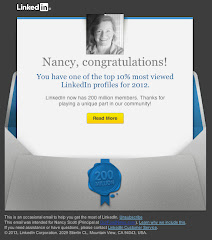Everybody knows that unique landing pages are a great device for measuring who’s visited your website and what they did there. Well, I just found out about Unbounce, a site that makes landing page design and testing almost idiot proof (or so it appears…)
The company was founded in 2009, but, until today, I didn’t know Unbounce existed. I’m late to the party, but I’m enthusiastic. I thought other marketers might get equally excited (and, no, I don’t work for Unbounce; I’ve never even used it).
Truth is, technology very seldom makes life simpler and cheaper for marketing professionals. Unbounce developers say anybody who can use PowerPoint can use Unbounce. I don’t know about that, but this looks like a technology worth investigating.
I see striking similarities between Unbounce and ConstantContact (which I have used and like very much). An abundance of copycat services has followed since ConstantContact launched in 1998, but this service gave marketers (particularly those working for smaller, less heavily funded organizations) entry to the world of online newsletters. This option enabled a lot of marketers to bypass costly (and, in my view, overpriced) “website designers” and “html programmers” and deliver needed information to customers, members, and donors. Unbounce would appear to have similar advantages, including:
• affordability ($50/month for sites with 2,500 unique visitors/month)
• templates that allow marketers to very quickly set up a landing page
• ease of A/B testing of landing page components
• desktop execution that requires no participation from the IT department. I don’t mean to be disrespectful here, but this feature allows marketers to grab the reins and chase down market trends.
Again, I haven’t used Unbounce, so I can’t vouch for it personally. But I did a little research (below) to help marketers evaluate for themselves. All these links appear on page one of the “Unbounce” Google search. More research would produce additional reviews/evaluations.
• Which Multivariate. “The real strength of the solution is that the same person who creates the landing page can publish it live and run an A/B split test without ever touching the code.”
• Mixergy. “ … Unbounce, a tool that makes it dead easy to create and test landing pages.”
• AppVita. “If you’re a marketing professional putting together a new landing page for an important campaign, then you’re exactly the type of user Unbounce is looking for.”
• SchneiderB. “… I began experimenting with landing pages and discovered a hidden gem, Unbounce … I began using it immediately and I love their product for 6 reasons.”
• Disruptive Conversations. “I've used the site now for various ad campaigns, email newsletter links, print ads and more. What I like in particular is that it is so very easy to try out multiple variations of a landing page and see which one works the best.”
Prusak.com. “For many of the smaller mom-and-pop sites, simply creating the test pages or sections is beyond their capabilities … these new products come with a built in WYSIWYG editor, which truly lowers the barrier of entry for split testing.”
Reedge. “Making the Unbounce landing page respond dynamically to users’ behavior and users’ search keywords can increase conversion even more.”
p.s. Thanks to Cindy Kilgore, manager of creative development at EU Services, whose great tweet alerted me to Unbounce.
-- scrubbed by marketing brillo
